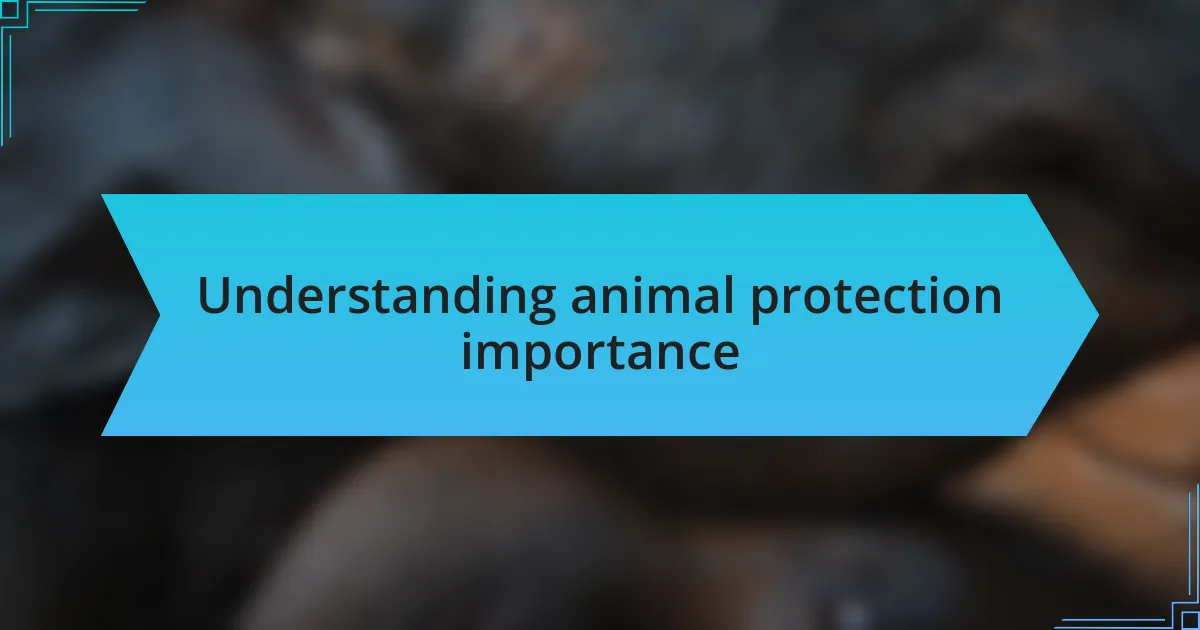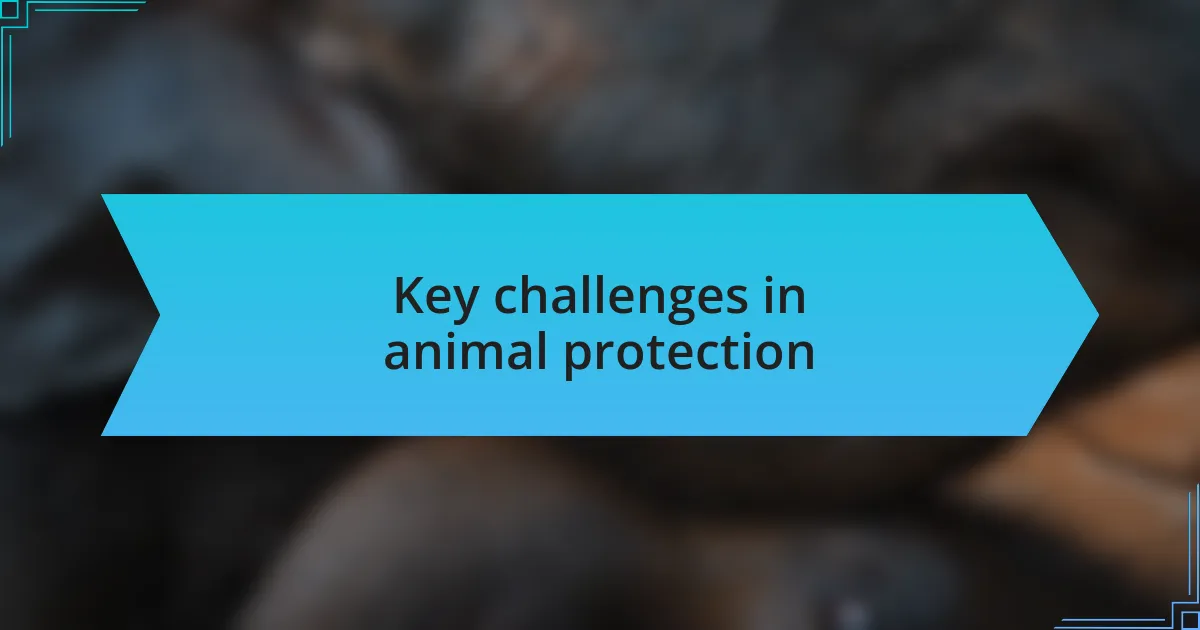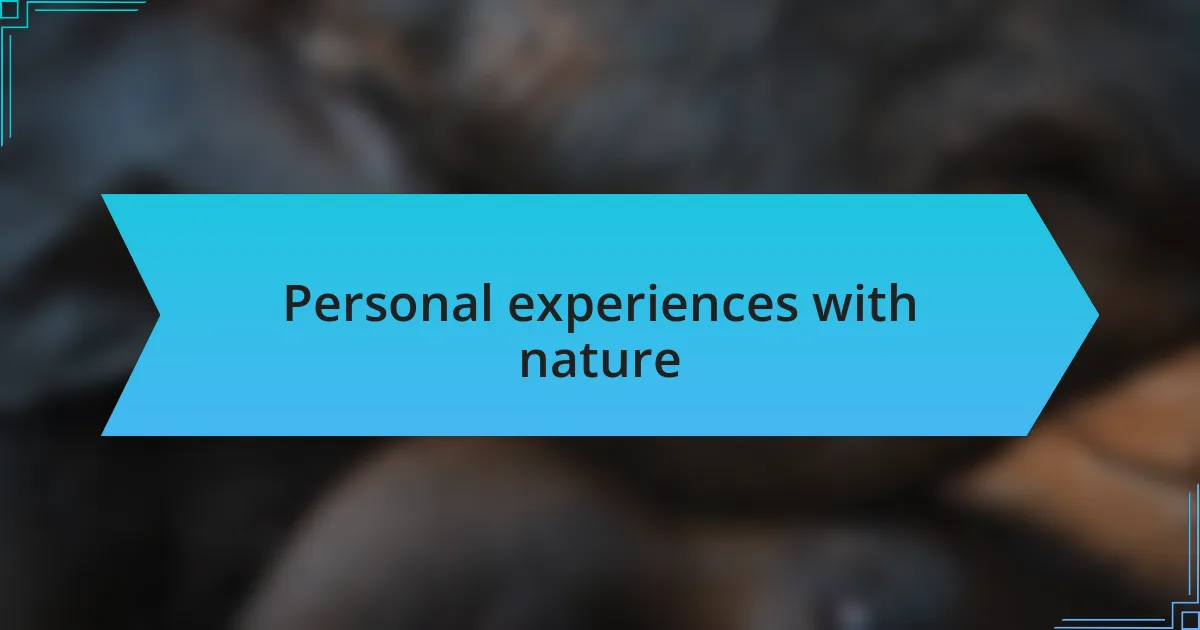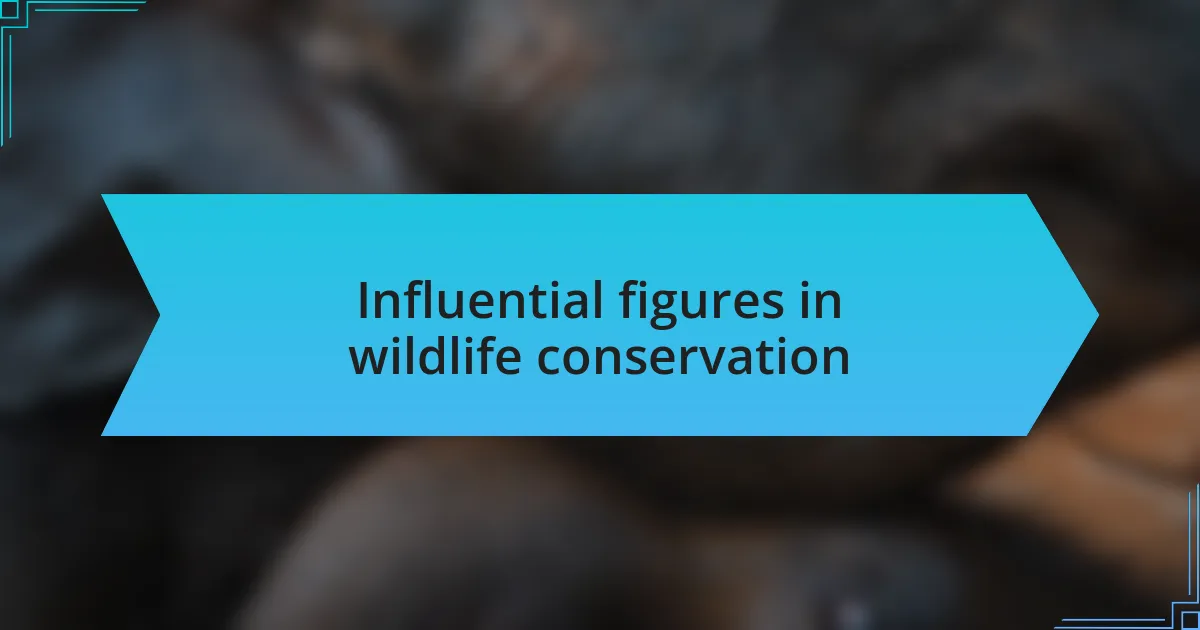Key takeaways:
- Animal protection is essential for maintaining biodiversity and a balanced ecosystem, highlighting the interconnectedness of humans and wildlife.
- The Animal Protection Society plays a crucial role in advocacy, education, and legislation to ensure animal welfare and conservation efforts are prioritized.
- Challenges like habitat destruction, illegal wildlife trade, and public indifference hinder animal protection efforts and necessitate collective action and awareness.
- Influential figures in wildlife conservation inspire change through their dedication and innovative approaches, emphasizing the importance of grassroots advocacy and community involvement.

Understanding animal protection importance
Animal protection is crucial because it ensures the survival of our planet’s biodiversity. I remember visiting a wildlife refuge where I saw injured animals being rehabilitated. That experience brought home to me how interconnected our lives are with these creatures; their well-being is essential for a balanced ecosystem. How can we claim to cherish nature if we turn a blind eye to those who cannot speak for themselves?
Every time I witness an animal in distress, I feel an undeniable urge to act. It strikes me that protecting animals isn’t just about compassion—it’s about preserving our own future. After all, when we protect endangered species, we safeguard not only their rights but also the health of the environment. Can we truly thrive as humans if we allow others to suffer?
The importance of animal protection extends far beyond the immediate benefits; it shapes our humanity. I recall a time when I volunteered to help with community awareness about local wildlife. The gratitude in the eyes of those animals and the community’s reaction illustrated a powerful truth: by caring for them, we enrich our own lives. How can we not feel inspired to protect something that enhances our very existence?

Role of Animal Protection Society
The Animal Protection Society serves as a vital advocate for the voiceless, bringing attention to the plight of endangered species and their habitats. I’ll never forget attending a fundraiser where heartfelt stories of rescued animals were shared, igniting a passion within the audience to support the cause. How powerful is it to realize that together, we can change the course of these animals’ lives?
In daily operations, this organization plays a crucial role in educating the public on the importance of animal welfare. From hosting workshops to partnering with schools, they spread awareness about responsible pet ownership and wildlife conservation. I recall speaking to a group of children at a school event; their curiosity and enthusiasm reminded me that the future relies on informed generations. Can we afford to ignore the lessons we can impart to our youth?
Moreover, the Animal Protection Society actively participates in legislation and policy-making, campaigning for laws that protect animals at risk. This advocacy work resonates with me because it emphasizes that change often begins at the grassroots level. When I engaged in a local rally advocating for stricter anti-poaching laws, I felt an exhilarating sense of unity with others who shared my conviction. Isn’t it uplifting to be part of a collective effort that pushes for justice, not just for animals but for the environment as a whole?

Key challenges in animal protection
One of the key challenges in animal protection is the widespread habitat destruction driven by urbanization and industrial expansion. I remember visiting a once-thriving wetland, now reduced to mere patches of water surrounded by concrete. Witnessing this stark transformation made me realize that every square mile destroyed is a step further from a balanced ecosystem. How can we possibly expect our wildlife to thrive when their homes are systematically taken away?
Another significant hurdle is the illegal wildlife trade, which continues to flourish despite ongoing conservation efforts. I once encountered a passionate conservationist who shared their harrowing story of rescuing animals from poachers. Their determination was inspiring, yet it also highlighted a deep-seated anger over an industry that profits from suffering. This raises an important question: what measures can we take as a society to combat this global crisis effectively?
Finally, public indifference often undermines the efforts of animal protection organizations. I have seen this firsthand when discussing animal welfare at social gatherings, where some acquaintances shrug off the importance of the cause. It’s disheartening to reflect on how easily people can overlook the urgent need for change. Isn’t it crucial to cultivate empathy and understanding, fostering a collective awareness that can spark action?

Personal experiences with nature
There was a moment during a childhood camping trip that truly opened my eyes to the beauty of nature. I vividly remember standing atop a hill at sunrise, the world beneath me bathed in golden light, and the air filled with the sweet scent of pine trees. That singular experience instilled a sense of wonder within me, reminding me how vital it is to protect these pristine environments that inspire awe and joy.
On another occasion, I was volunteering at a local wildlife rehabilitation center. I held a young fox that had been rescued from the brink of starvation, its eyes wide with fear yet filled with a flicker of hope. In that moment, I felt an intense connection to this creature, as if both of us shared a silent understanding of vulnerability. Isn’t it astounding how a simple interaction can transform your perspective on our responsibility towards protecting such creatures?
I often find solace during my morning walks through the nearby forest, where the rustling leaves and chirping birds create a symphony of life. However, I’m sometimes taken aback when I stumble upon litter left behind by careless visitors. It pains me to think that what should be a sanctuary for wildlife is marred by human negligence. How do we reconcile our love for nature with our actions that harm it? This constant reflection drives my commitment to advocating for our environment.

Influential figures in wildlife conservation
When I think about influential figures in wildlife conservation, names like Jane Goodall come to mind. Her pioneering work with chimpanzees not only changed our understanding of these incredible creatures but also highlighted the importance of empathy in conservation. I often find myself inspired by her relentless dedication and the way she emphasizes personal responsibility in protecting our environment—how can we not take a cue from such passion?
Another significant figure is Sir David Attenborough, whose documentaries have profoundly impacted public awareness of ecological issues. Watching his captivating footage of wildlife left me in awe, reinforcing the idea that we are all interconnected. How could I not feel a strong urge to safeguard these magnificent ecosystems when they are portrayed with such beauty and urgency?
Then there’s Wangari Maathai, known for her advocacy in reforesting Africa. Her Green Belt Movement not only restored degraded land but also empowered communities, reminding me that conservation goes hand-in-hand with social justice. Can we use her approach to inspire local efforts in our own communities? I believe we can, and it starts with understanding the stories behind those who made significant strides in wildlife conservation.

Inspiring stories of successful advocacy
One story that resonates deeply with me is that of the Australian conservationist, Tim Flannery. After witnessing the devastating impact of climate change on the Australian ecosystems, he mobilized communities to take action by sharing his experiences through compelling storytelling. His enthusiastic engagement inspired local farmers to adopt sustainable practices, transforming barren landscapes into thriving environments. Isn’t it incredible how one person’s story can ignite a collective movement?
Another inspiring example is the work of the Sea Shepherd Conservation Society, led by Captain Paul Watson. Their aggressive tactics to protect marine life have ruffled feathers, but for me, their commitment to direct action showed the world the lengths to which advocates will go for their cause. I remember watching footage of their daring interventions, feeling both anxious and exhilarated—would I have the courage to stand up for what I believe in like they have?
Then there’s the impact of community-driven initiatives, like the story of the town of Cape Town, which faced severe water shortages. Local activists banded together to advocate for rainwater harvesting and conservation education, ultimately changing public policy. I felt an overwhelming sense of hope when I learned about their success because it reinforced my belief that grassroots advocacy can lead to substantial change. Can you envision the power of community rallying to protect their resources? It’s a reminder that every voice matters in the fight for nature.